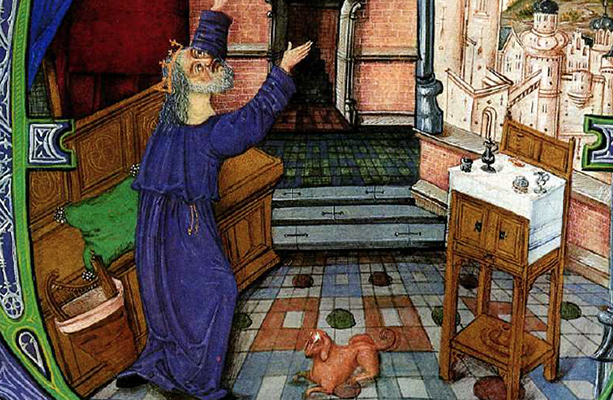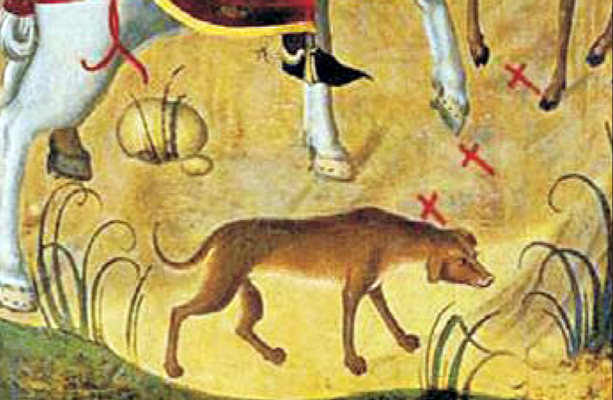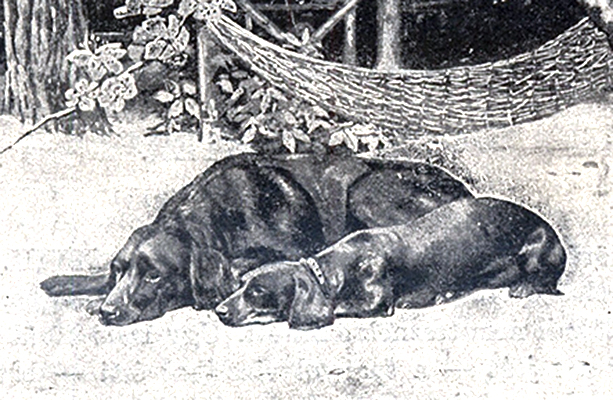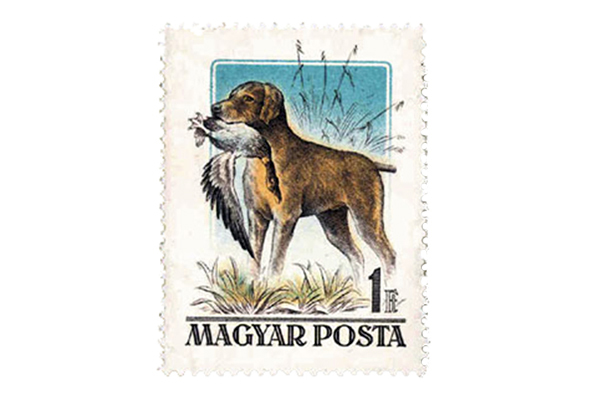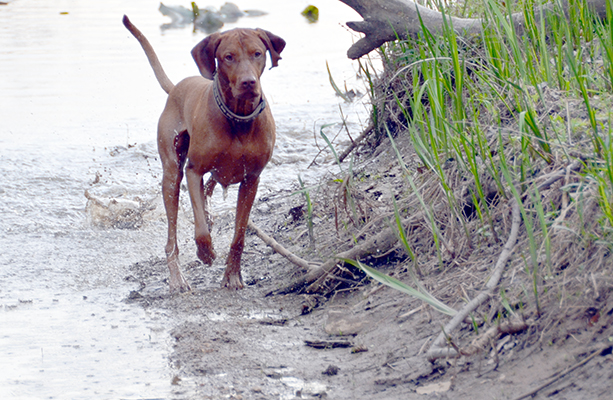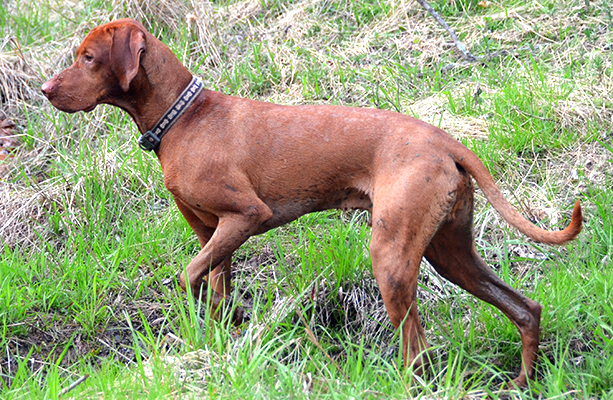Welcome to Nine Hungarian Dogs
Smooth-haired Vizsla | Rövidszőrű Vizsla
[røvidsøːryː viʒlɒ]
Hunting Dog
The Vizsla is a very affectionate pointer and retriever. They live two lives: at home, they follow their owners everywhere, seeking full-time attention as well as comfort on the sofa; in the field, they pick up the scent of their prey, then point at them, and chase them. Vizsla combines the hunting attributes of a setter, a pointer, and a retriever. Thus, the nickname, "versatile Vizsla."
Hunting Dog
The Vizsla is a very affectionate pointer and retriever. They live two lives: at home, they follow their owners everywhere, seeking full-time attention as well as comfort on the sofa; in the field, they pick up the scent of their prey, then point at them, and chase them. Vizsla combines the hunting attributes of a setter, a pointer, and a retriever. Thus, the nickname, "versatile Vizsla."
History
The ancestors of Vizsla came with the migrating Magyar tribes around 896 CE. The medium-sized yellow dogs accompanied their owners everywhere and became the favored dog during hunting expeditions. Vizslas’ acute sense of smell and a constant drive to find the hunters’ quarry made them exceptional hunting dogs. Their close level of cooperation with hunters made them unique. Once the Vizsla found the hunters’ prey, they would signal the hunter by pointing with their head held low, their tail erect, and their right front paw raised. The hunter would subsequently loose his arrow or send their falcon to kill the prey. The Vizsla then brought back the dead animal.
Pictures of Vizsla’s ancestors show up in different centuries. The oldest depiction of the nobility’s favorite dog, the Vizsla, is a pen drawing in the Codex Albensis, dating to around 1100. This antiphonarium—a collection of religious songs—was hand-decorated by one of its readers after the codex was finished. The pen drawing depicts a Vizsla staring at a rabbit that is calmly eating under a tree.
King Nagy Lajos’ Illuminated Chronicle (also known as Chronica Hungarorum) from 1358 depicts Vizsla-like dogs in the illuminated letters "A" and "D."
Matthias Graduale from 1487 was created under Mátyás I rule. This religious book is highly decorated with scenes from the humble life of a good Catholic. The lusciously painted 107th folio “E” initial depicts King David praying to the Lord while a Vizsla is lying in the middle of the throne room.
The 1526 expansion of the Ottoman Empire brought an influx of Turkish hunting dogs. These bred into the Magyar’s yellow pointers.
After 150 years of Ottoman Empire’s occupation, the Hapsburgs ruled Hungary. During this time, hunting became the exclusive right of the nobility. Since Vizslas were able to fulfill the role that many dogs often performed, their popularity with hunters throughout Europe soared. This highly specialized breed was taken to Germany and England to cross breed with other pointers. This likely explains the Vizsla’s resemblance to Irish Setters.
In the 19th century, the Austrian-Hungarian Empire continued to revise property rights and hunting rules. These resulted in a much smaller Vizsla population. In 1916, after the near-decimation of the breed’s population, a hunting organization named Hubertus attempted to save the breed. Hubertus announced the first Vizsla standard in 1920 and established the proper breeding guidelines. However, after the Second World War, the Vizsla population dwindled again when the Communists who governed Hungary believed the Hungarians who owned Vizslas were wealthy. The Communists persecuted the dogs and their owners. Hungarians fleeing their country brought their dogs with them. Vizslas then became very popular in several nations, including the United States, the United Kingdom, and Argentina. Vizslas that escaped Communist Hungary in the 1950s became the foundation for breeding subsequent generations.
Details
Etymology
Vizsla, at first, was an adjective although it soon became widely used as a noun. As a place name, bloodhounds from Vysla in Nógrád County are mentioned in 1350 for the first time. As a hunting dog, “wyzslath” is mentioned in a letter to Batthyányi Kristóf in 1563. Most specifically it meant a hound dog with excellent scent abilities. By 1657, Vizsla specifically referred to a breed.
Physical Characteristics
The Vizsla is striking in appearance. The breed is often described as having a spotless short coat with golden-rust coloring. The Vizsla’s smooth coat is coupled with an evenly toned, medium-sized body. Their large ears almost touch their shoulders. The head has a short muzzle, with nose blends in well with the coat. Their height is 21–25 in (54–64 cm), and weight is 40–64 pounds (18–30 kg).
Personality
The Vizsla is very lively, friendly, and even-tempered. It is easily trained, never aggressive, eager to learn and work, but cannot bear harsh treatment or yelling. They are ultra-sensitive.
Ideal Lifestyle
Like all working dogs, especially hunting types, the Vizsla requires a lot of exercise to stay healthy and avoid depression. Vizsla loves to think and be challenged.

